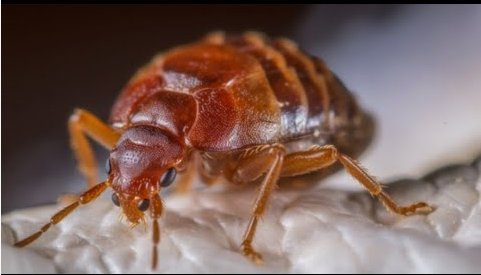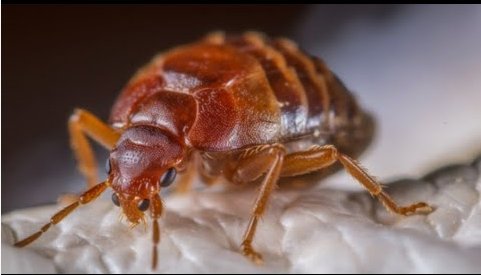Bedbugs are tiny, nocturnal pests that can be a huge problem in households worldwide. These resilient creatures have adapted to living in close quarters with humans, making them difficult to detect and even harder to eliminate. Understanding the lifestyle of bedbugs and the best methods to eliminate them is essential for preventing infestations and ensuring your home remains a peaceful, pest-free environment. In this article, we’ll delve into the biology of bedbugs, how they live, and the most effective ways to get rid of them from your home.

### **What Are Bedbugs?**
Bedbugs are small, flat insects belonging to the Cimicidae family. The most common species affecting humans is _Cimex lectularius_. These pests are reddish-brown, wingless, and about the size of an apple seed (approximately 4-5mm in length). Bedbugs are known for feeding on the blood of humans and other warm-blooded animals, often at night. While they do not transmit diseases, their bites can cause itching, irritation, and allergic reactions, making them a nuisance in any home.
### **Bedbug Lifestyle: Habits and Behavior**
#### **Feeding Patterns**
Bedbugs are hematophagous, meaning they feed exclusively on blood. They are most active at night, emerging from their hiding places to feed on humans while they sleep. Bedbugs are attracted to carbon dioxide, body heat, and the scent of sweat, which is why they tend to target people who are resting.
A bedbug bite is painless at first, but it can result in red, itchy welts that may appear hours after feeding. Unlike mosquitoes, bedbugs do not inject saliva that causes immediate irritation, which is why their bites may go unnoticed at first. Bedbugs can feed for about 5-10 minutes before returning to their hiding spots.
#### **Hiding Places**
Bedbugs are experts at hiding, which is why infestations can often go undetected for a long time. They typically reside in cracks and crevices close to where their hosts sleep. Common hiding spots include:
– **Mattresses and Box Springs**: Bedbugs often hide in seams, folds, and cracks of mattresses, box springs, and bed frames.
– **Furniture**: They may also hide in upholstered furniture, behind baseboards, in cracks of wooden furniture, and behind wall hangings.
– **Luggage and Clothing**: Bedbugs can easily travel from one location to another, hitching rides in luggage, clothing, or even furniture.
Bedbugs are incredibly secretive, and their small size makes them difficult to spot. While they prefer to stay near their hosts, they can also live in other parts of the home, such as in cracks in walls, electrical outlets, and other hidden places.

#### **Reproduction**
Bedbugs are prolific breeders. Female bedbugs can lay between 1 and 5 eggs per day, and a single female can lay up to 500 eggs in her lifetime. The eggs are tiny, about the size of a pinhead, and are often laid in cracks, crevices, or other protected areas. The eggs hatch into nymphs after about 6-10 days, and they grow through five stages before reaching adulthood. Bedbugs can survive for months without feeding, making them particularly difficult to eradicate once they’ve established an infestation.
### **How to Identify a Bedbug Infestation**
Detecting a bedbug infestation early can help prevent it from becoming more severe. Signs of bedbugs include:
– **Bites**: Red, itchy welts often appear on the skin after bedbugs feed. These bites may be in clusters or rows and are usually found on areas of the body exposed during sleep, such as the arms, neck, or legs.
– **Fecal Stains**: Bedbugs excrete dark spots of fecal matter after feeding. These can appear on sheets, mattresses, and furniture.
– **Eggs and Shed Skins**: Bedbug eggs are white and about the size of a pinhead. As they grow, they shed their exoskeletons, which can be found near their hiding places.
– **Musty Odor**: In heavy infestations, bedbugs emit a distinct musty odor, which comes from a chemical they produce. This odor is particularly noticeable when you disturb a heavily infested area.
### **How to Eliminate Bedbugs from Your Home**
Getting rid of bedbugs requires persistence and a combination of methods. Because bedbugs are hardy pests that can survive without feeding for long periods, it can take time and effort to fully eradicate them. Below are some proven strategies to eliminate bedbugs from your home.
#### **1. Clean and Declutter**
Start by thoroughly cleaning the infested areas. Decluttering your home will help reduce hiding spots for bedbugs and make the next steps more effective. Wash all bedding, clothing, and fabrics in hot water (at least 60°C) and dry them on high heat. Bedbugs can be killed by exposure to high temperatures, so this is one of the most effective methods for eliminating them from textiles.
Vacuum the floors, walls, and furniture, paying special attention to cracks, crevices, and seams where bedbugs may hide. Empty the vacuum cleaner immediately into a sealed plastic bag to prevent the pests from escaping.

#### **2. Use Heat Treatment**
Heat treatment is a highly effective method of killing bedbugs at all stages of life. You can use a portable steam cleaner or a heat treatment company specializing in pest control. The steam should be directed into cracks and crevices where bedbugs may be hiding. The high temperature will kill both the bugs and their eggs.
For larger areas, professional heat treatment services are available. These companies heat entire rooms to temperatures of 50°C or higher, ensuring that the heat reaches all areas where bedbugs might be hiding.
#### **3. Apply Insecticides**
Insecticides can be used as part of an integrated pest management plan. Bedbug-specific insecticides, such as those containing pyrethrins or neonicotinoids, can kill adult bedbugs and nymphs. It’s important to follow the manufacturer’s instructions carefully, as improper application can reduce the effectiveness of the treatment.
Spray insecticides in cracks, crevices, and along baseboards, but avoid spraying on mattresses or bedding. Insecticides should be used in combination with other methods, such as vacuuming and cleaning, for the best results.
#### **4. Encase Your Mattress and Box Spring**
After cleaning and treating your bed, encase your mattress and box spring in a bedbug-proof encasement. These zippered covers trap any remaining bedbugs inside and prevent new ones from entering. Be sure to leave the encasement on for at least a year, as bedbugs can survive for extended periods without feeding.
#### **5. Call a Professional Exterminator**
If the infestation persists or is widespread, it may be time to call in a professional pest control service. Exterminators have access to more potent treatments, such as fumigation or whole-home heat treatments, that can effectively eliminate bedbugs. Professionals also have the experience and tools to identify and treat all possible hiding spots in your home.

### **Preventing Future Bedbug Infestations**
Once you’ve successfully eliminated bedbugs from your home, the next step is to prevent them from returning. Here are some helpful tips:
– **Inspect secondhand furniture**: Before bringing any secondhand furniture, clothing, or other items into your home, inspect them thoroughly for signs of bedbugs.
– **Seal cracks and crevices**: Seal any cracks or holes in walls, baseboards, and around windows and doors to eliminate potential hiding spots for bedbugs.
– **Be cautious when traveling**: Inspect hotel rooms for signs of bedbugs before settling in. Keep your luggage on a luggage rack, away from the bed, and inspect it thoroughly when returning home.
– **Regularly clean your home**: Regular vacuuming and cleaning can help prevent bedbugs from finding suitable hiding spots in your home.
### **Conclusion**
Bedbugs are persistent pests that can be challenging to deal with, but with the right knowledge and tools, they can be effectively eliminated from your home. Understanding their lifestyle, behavior, and feeding habits is key to preventing and managing an infestation. By combining cleaning, heat treatments, insecticides, and professional help if needed, you can ensure that your home remains free from these troublesome pests. Always take preventive measures to keep bedbugs from returning, and you’ll be able to maintain a safe and comfortable living space.
